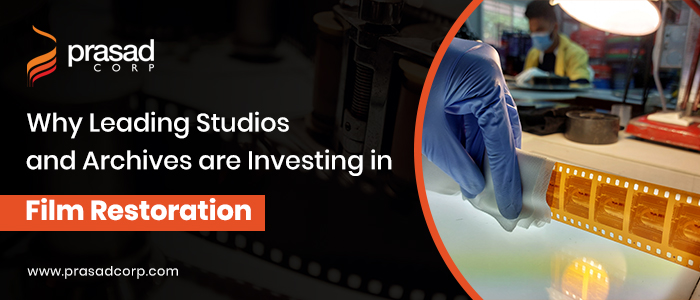Breathing New Life into Old Reels
The cinematic world holds an extensive legacy of stories told via reels of celluloid, etched in film grains, rich in emotion, artistry, and culture. Yet, many of these works are gradually fading, stored in aging vaults or ignored archives. Time, temperature, and technological obsolescence are steadily fraying them down.
In recent years, a crucial transformation has emerged. Studios and archival institutions are increasingly investing in film restoration, not only to save this legacy but also to reinvent its importance. This growing trend is compelled by more than sentiment; it’s a useful, strategic move rooted in cultural conservation and commercial possibility.

Restored Films Hold Value Beyond Nostalgia
Old films are not merely antiques of the past; they are emphatic assets. Restored cinema can reconnect audiences with masterpieces, present historic work to new generations, and offer content for educational, cultural, and commercial reuse.
Film restoration lets faded reels be cleansed, color-corrected, and revived with modern visual clarity. Paired with film scanning in 4K or 8K, even century-old footage can be presented on contemporary platforms without compromising quality. These high-resolution versions breathe new life into titles that were once considered unusable.
Streaming platforms, digital libraries, and international festivals are all creating new demand for vintage and archival content. Studios that once saw no return on old assets are now rediscovering them as fresh opportunities for licensing, retrospectives, and branded experiences.
Why Investing in Film Restoration Pays Off
The act of investing in film restoration offers both immediate and long-term returns. Here’s what makes it worth the cost:
1. Revenue from Redistributed Content
Digitally restored films are now being re-released in cinemas, sold to OTT platforms, and used in educational content. What was once a dusty reel on a shelf can become a streamable, sellable asset across global markets.
2. Protecting Intellectual Property
Film rights lose value if the content itself is physically unusable. Restoration preserves not just the film, but the legal and commercial rights attached to it. By modernizing the format, studios future-proof their IP and ensure its continued usability.
3. Elevated Brand Reputation
Whether it’s a national archive preserving cultural treasures or a studio reviving its golden-era catalog, film restoration communicates dedication to quality and heritage. This builds trust with audiences, critics, and partners.
4. Eligibility for New Exhibitions and Markets
Restored films often qualify for film festivals, museum showcases, and curated events that require high-quality prints. Restoration opens doors to new forms of recognition and audience engagement.
A Smart Move by Studios and Archives Alike
Leading institutions are not waiting for deterioration to take its toll. They are making calculated decisions to identify, scan, and restore high-value assets before damage becomes irreversible.
Archives around the world are partnering with industry experts for comprehensive film scanning and restoration projects. From Hollywood production houses to national archives in Asia, Europe, and Africa, the message is clear: restoration is not just for classics. It’s a proactive way to manage and elevate an entire library.
Studios also recognize that younger audiences, born into digital clarity, demand better viewing experiences. A beloved film, even with great storytelling, won’t resonate the same if presented in poor visual or audio quality. Investing in a fully restored version aligns the product with modern expectations.
Restoration: A Visionary Yet Practical Strategy
Investing in film restoration is one of the few creative and commercial decisions that serve both history and the future. It ensures stories are preserved in their best form, while creating new ways for them to be experienced and monetized.
This investment isn’t just about looking back; it’s about unlocking forward momentum. Restored content doesn’t sit in silence; it finds new voices, new audiences, and new relevance. It becomes part of an active portfolio rather than a forgotten relic.
As demand for high-quality legacy content rises, studios and archives that embrace restoration early will lead the charge, owning both the past and the future of storytelling. The reels may be old, but with restoration, the opportunities are timeless.

